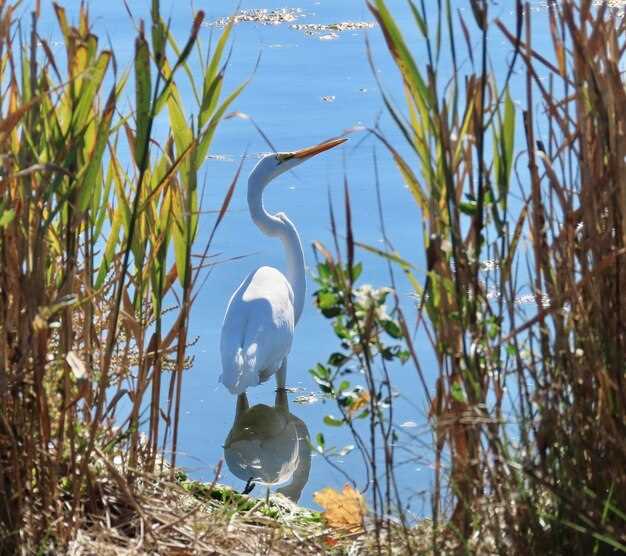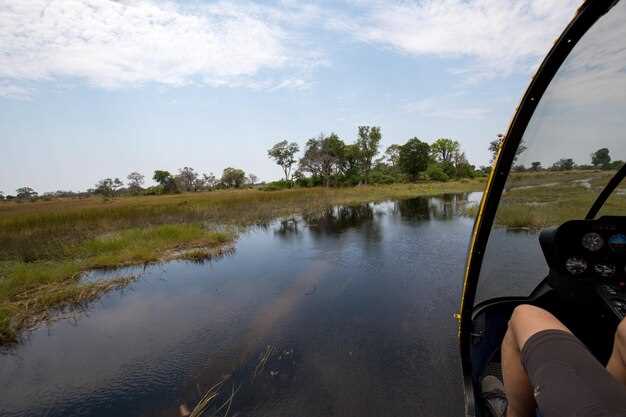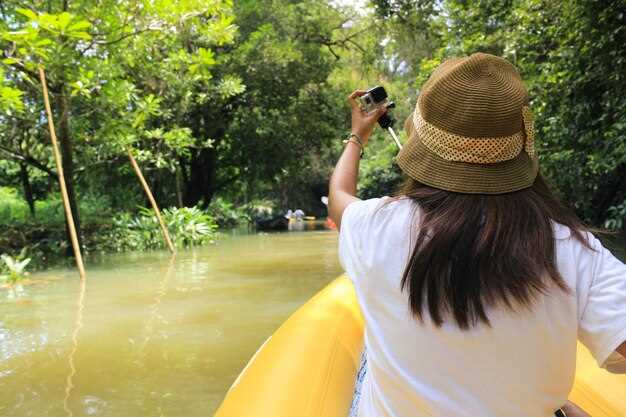
Reserve a morning airboat tour; the hours from sunrise to late morning deliver the clearest light and the most active wildlife. At Sawgrass Park, the boats glide gently through the sawgrass channels, keeping engine noise low and sightlines high so you can spot birds, turtles, and occasionally a reptile basking along the bank. This setup is likely to yield memorable encounters, and you’ll leave with photos that capture the flat, sunlit water and towering grasses; you may be surprised by what you found along the bank, and this setup makes it possible to photograph alligators gliding between the reeds.
An expert guide leads a safari-style ride, sharing insights about marsh ecology, bird behavior, and the animals that call these wetlands their home. The operator is offering quick stops to observe a major colony of herons or a family of turtles, and they’re likely to point out a reptile basking on a log. Expect clear explanations before every stretch, and the captain will tailor the pace to the group’s interest.
Facilities around the dock include restrooms, shaded seating, and a viewing deck. Multiple tours are available throughout the day, and nearby you’ll find casual eateries where you can unwind after the ride, and some venues offer wine tastings and light snacks. Always verify hours on-site, as tours adjust with the season and weather.
Tips for a smooth experience: dress in lightweight, quick-dry clothing, wear sunglasses and a hat, and bring a waterproof bag for phones. If you’re visiting with kids, choose daytime tours that stay within comfortable speeds and keep a watchful eye on the water at all times. The schedule prioritizes very clear safety and wildlife viewing, so you’ll have confident guidance throughout.
For a broader day, some operators pair these daytime airboat rides with snorkeling in nearby springs or guided swamp safaris, giving you a deeper appreciation of the Everglades ecosystem.
Plan ahead and arrive early to secure a good seat, because the most likely outcome is a memorable, exhilarating experience that blends speed, scenery, and expert narration. There is no substitute for seeing the sawgrass and alligators from the airboat’s vantage, while the guide explains the environment with clear, accessible language.
Everglades Sawgrass Park: Daytime Airboat Tours & Wildlife Enthusiasts
Book ahead online to secure a daytime airboat ride at Everglades Sawgrass Park. Opt for a 60-minute duration on dates with cooler mornings to maximize wildlife visibility. For young explorers and kids, a calm start with gliding over sawgrass engages everyone from the first moment.
During the glide you may spot osprey, herons, and alligators in their natural rhythms. You might also glimpse the elusive alligatoran sunning on a log. The ecosystem offers remarkable views of a delicate wetlands balance, and guides explain how sawgrass and water flow sustain this habitat. Learn about florida wetlands and the park’s role in conservation and about ongoing restoration efforts.
Guidelines for safety and comfort: Wear sun protection, bring water in small containers, and keep bags light. Life jackets are provided and should be worn by kids. Disembark at the designated dock after the ride. If you arrive by air, the nearest airport is Miami (MIA) or Fort Lauderdale (FLL), with a short drive to the park. Next, check dockside boards for the embarkation area.
Photography and videography tips: Use a fast shutter to capture daytime action. Shoot from multiple sides of the boat to catch an osprey dive or a gliding reflection on the water. The videography plan can aim for a uffizi-inspired frame; avoid flash and secure your gear to prevent slips. A remarkable recap starts with a steady hand and patience during the turn.
Practical tips for planning: Bring a compact camera or smartphone; the ride is easily accessible. A wood platform and dock support smooth disembarkation. Mark your visit on your calendar next to other Florida adventures; visiting on different dates adds variety and keeps the experience engaging for families and wildlife enthusiasts alike.
Daytime Airboat Tours: Practical Essentials for Wildlife Lovers
Book a 60-minute morning airboat tour to maximize wildlife sightings and comfortable temperatures, providing close-up views of alligators, wading birds, and miles of sawgrass marshes.
Inclusions: The price generally covers a licensed guide, official life jackets, and the narrated ride; included are the safety gear and the chance to observe wild habitats from a stable platform.
What to wear: Wear quick-drying clothes, water-resistant shoes, a hat, and sunscreen; sunglasses protect your eyes when you skim through sunlit channels.
Gear and rentals: If you travel light, rental options are available for binoculars or a small camera; consider adding rental during booking.
Planning and duration: Most daytime tours last 30–60 minutes; however, longer options are available for travelers seeking more miles of water. Considering the wildlife cycles, morning slots deliver the best visibility.
Booking tips: Use the online portal to book your seat and plan your visit; this option showcases Florida’s wild wetlands and provides a relaxed pace for families and solo travelers alike.
Travelers and origins: Travelers from america and hanoi often plan to combine this with other park experiences; this route through sawgrass offers nature up close, so you can enjoy the moment.
Safety and etiquette: Stay inside the platform, keep quiet, and wear your life jacket; never feed wild animals; follow the guide’s direction through all water channels.
Next steps: Next, book online to secure your preferred time and start planning your visit; travelers seeking a leisurely pace will appreciate the calm rhythm of this option.
Best Times to Spot Key Species During Daylight Tours
Book the 60-minute morning tour right after sunrise to maximize sightings. This is the only window when the marsh is quiet enough for clear viewing, and birds and alligators become active through the first light along the sawgrass. You can easily observe a range of species, from egrets to herons, and notice insects skimming the surface as the day warms. The entrance area and fort-like overlook provide clear lines of sight, making what you see here accessible to travelers of all experience levels, including first-time visitors and expert wildlife enthusiasts. This immersive experience ensures you’ll appreciate the morning dynamics and the marsh’s productivity.
For a second window, schedule a 60-minute afternoon slot from roughly 3:30 to 6:00 pm. The scenic light enhances views through sawgrass channels, and you’ll spot a broader range of life as birds forage and reptiles emerge along the water’s edge. Guides help travelers participate in focused observations, including how to identify endangered species without disturbing them. The view from the entrance-side overlook offers a clear through-line to the marsh and keeps the action within a compact range, which is appreciated by city visitors and village guests alike.
Practical tips: wear a light jacket for cooler mornings and breezy boardwalks; bring a compact camera or binoculars to capture quick glimpses without disturbing wildlife. Move quietly through the observation routes near the sawgrass, and follow your expert guide’s cues to avoid startling animals or forcing them to hide. The fort-style overlook and entrance plaza provide stable spots to pause, compare sightings, and discuss what you’ve seen, making this day an immersive, memorable experience that is appreciated by travelers here.
What to Pack for a Day Tour: Clothing, Gear, and Snacks
Pack a lightweight rain shell and quick-dry layers so youre ready for sudden Florida sunshine and showers; this ensures you stay comfy during a full-day airboat ride.
Choose clothing that dries fast and protects you from sun and spray. A moisture-wicking T‑shirt, a long-sleeve sun shirt, and a wide-brim hat work well. For footwear, pick closed-toe shoes with good grip; avoid flip-flops, since spray and mud are common. If youre traveling with a baby, add a light sun cover and a compact change of clothes for the little one.
Keep essential items in a small dry bag. The schedule for the day includes on-water time and quick rest stops; inclusions typically cover water and a light snack, and included items vary by operator. Youre set for the day with a plan for 1–2 liters per person, plus a snack stash for mid-day energy.
- Clothing
- Lightweight moisture-wicking shirts, breathable shorts or pants, and a long-sleeve layer for sun and spray
- Wide-brim hat and UV sunglasses
- Packable rain shell; footwear with grip (closed-toe preferred)
- Extra socks; for a full-day schedule, a spare pair helps if you get spray-muddy
- baby: lightweight sun cover and extra outfit for the little one
- Gear
- Small dry bag for valuables and a water bottle
- Camera with spare battery and lens cloth for close-up wildlife shots; if you want sharper captures, a telephoto lens might help
- Binoculars (optional) and microfiber cloth
- Water and electrolyte options (1–2 liters per person); map or phone with offline guides
- kayak: if you plan to kayak later, bring a swimsuit and towel; the area offers opportunities to explore additional waterways
- Note: helicopter traffic is minimal around the park; you’re on the water, not the sky
- Where cameras are allowed, keep a compact setup ready for the best close-up opportunities
- Snacks and hydration
- Granola bars, nuts, dried fruit, and a piece of fruit for sustained energy
- Hydration plan: 1–2 liters per person, more on hot, sunny days
- Electrolyte packets or a flavored beverage mix to boost hydration
- Check the scheduled times and pack accordingly so you dont miss wildlife windows
- opportunities to observe rich wildlife (ospreys and other birds) are common within view from the boat
Route Highlights: Sawgrass Trails, Waterways, and Stopovers
Book a morning airboat tour in a small group to maximize sightings and keep speeds moderate for stable framing.
Across the Sawgrass Trails you glide over grassy flats, watching for storks and other creatures. The captain keeps a steady pace and points out what to watch for, so what you see becomes a shared moment for the group.
-
Sawgrass Trails
Begin over grassy flats where sunlight flickers on blade tips. The airboat slows to comfortable speeds, letting you scan for creatures along the reed edges. The guide provides quick tips on what to look for and where to aim your camera, so you and the group share the discovery rather than miss it.
-
Waterways
The route winds through narrow channels where mangroves arch overhead. Expect limited noise and clear views of herons, storks, turtles, and occasional otters. You’ll see fish surface and, deeper pockets, secrets that hide among the reeds. The captain explains how currents shape the waterway and what you can see beyond the obvious. In select zones, snorkeling gear can be rented for a closer look at underwater life.
-
Stopovers
Stopovers provide a cultural glimpse and practical options. Admission to nearby preserve zones is handled at the dock; guides provide a deeper narrative about habitat health. A tasting of local flavors offers a quick cultural bite. Rental jackets and life vests are provided if a breeze over the water picks up. You can share sightings with the group and note what you want to revisit on future trips; these stops provide a chance to reflect on the wonder of the grassy wetlands, the stork’s silhouette against the sky, and the creatures seen along the way, and how life here contrasts with the city’s pace.
- Dress for sun and a breeze; a light jacket helps on the water.
- Bring a compact camera or phone to capture what you see; the group can share observations in real time.
- Keep speeds moderate to maintain clear framing and minimize splash.
- Choose a smaller group for closer views and quieter navigation; sharing sightings improves everyone’s experience.
- Rental gear such as life vests or snorkeling equipment is available at the dock if needed.
- Admission and fees vary by season; check ahead for current rates and what’s included.
Wildlife Photography Tips: Lighting, Angles, and Safety

Set your shutter to 1/1000s (or faster) and use continuous autofocus to freeze moving creatures as you glide past sandbars. This quick start keeps your subjects sharp while you ride the waters of america’s wetlands.
Lighting: Shoot during rich light of golden hours–early days and late days alike–or when clouds soften the sun. Meter for the brightest subject and use exposure compensation of +0.3 to +1.0 when whites bloom on water. Keep white balance on Daylight in clear sun, or Cloudy in overcast conditions to preserve warm tones. Avoid flash; it can spook creatures and disrupt safety protocols. When you need fill, rely on natural shade from the boat or a small reflector to keep shadows gentle without disturbing a meeting of wildlife. There’s a history behind the park’s approach, and staff provides facts about how to photograph without disturbing life, which makes you learn and explore with confidence.
Angles: Get eye level with the creatures by kneeling or lying on sandbars and peering from the dock. A telephoto in the 300–600mm range is ideal for distant subjects; a 70–200mm works well for closer moments during arriving passes. Captivating frames often come when a rare bird turns toward you or a friendly mammal glances your way, so patience pays off. If hides are available, use them; theres value in unobtrusive views that reveal behavior and texture. You can explore low-angle perspectives to emphasize reflections and the overall feel of the marsh.
Safety: Always follow staff directions; the park operates with safety as a priority. Maintain at least 15 meters from large animals and 5 meters from birds, stay seated, and keep hands and lenses inside rails. Do not feed wildlife or chase creatures. If you want closer looks, use a designated option like a hide or arrange a brief, supervised meeting with an instructor. Be prepared for spray and heat; carry dry bags for gear and a lens cloth, and use a strap that stays secure. Learning to read signs of stress in creatures protects them and yields lasting, very satisfying images. After your trip, review shots to identify strong angles, and plan better options for your next days on the water.
| Aspect | Recommended Settings | Notes |
|---|---|---|
| Lighting | 1/1000s+; f/6.3–8; ISO 200–800; AF-C; WB Daylight/Cloudy | Golden hour preferred; avoid flash |
| Angles | Low/water level; 300–600mm or 70–200mm | Use hides when available; align with reflections |
| Safety | Distance rules; seated; no feeding | Option to hire instructor; follow staff |
Safety Rules and Park Etiquette for Airboat Tours

Wear a U.S. Coast Guard–approved life jacket at all times during the tour, and listen to the guide’s safety briefing before the boat departs. Stay seated with your hands inside the vessel and keep clear of engine exhaust and moving parts. This simple rule protects participants and supports conservation by reducing risks that could disrupt wildlife viewing.
Weather-related conditions drive the schedule and route. The captain may slow, speed up, or pause to avoid lightning or high winds. It is likely that spray will dampen gear; bring a dry bag for electronics and a compact rain layer. Changes to the route can occur with shifting weather, so stay alert and listen to the crew.
To support conservation and minimize disturbance, do not feed or touch wildlife along the route. Keep a respectful distance from amphibians, birds, and other species you may see. If something spooks an animal or a guide notes a sensitive area, the tour may adjust to protect habitat. If you have concerns, raise them with the guide. You might have seen dramatic glimpses of birds and reptiles that illustrate the park’s ecological balance.
について setting of the Everglades sawgrass marsh demands quiet and coordinated movements. Follow the captain’s instructions, avoid sudden shifts, and stay on designated seats; do not lean toward the water. The captain navigates shallow channels with care to protect the habitat and riders. Along the route, respect other participants and the crew so everyone can enjoy the ride safely.
Interested guests can adjust plans with the park staff. If you want closer views or a longer tour, ask during check-in; however, safety and wildlife concerns guide decisions. The park can accommodate reasonable schedule requests when conditions permit, but weather-related changes may shift times.
History and ongoing conservation inform every rule. The park’s history of protecting habitat shapes today’s guidelines, and guides share context on how sawgrass ecosystems function. The planning approach, including careful route choices, sometimes mirrors the precision you see in hanoi planning, which helps showcase safe, enjoyable experiences while reducing impact.
